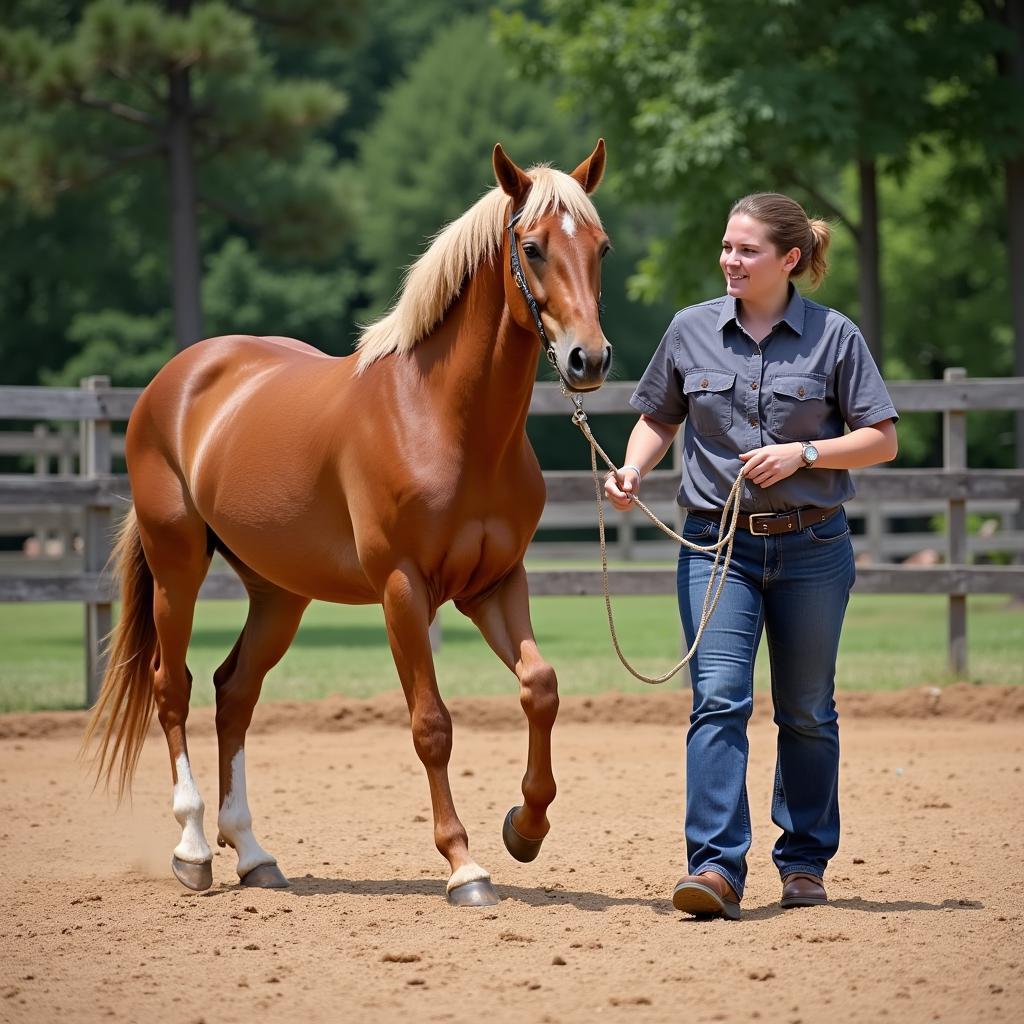Confidence is key for a horse to reach their full potential, whether they’re destined for the show ring, the trails, or simply a happy life as a companion. While traditional training focuses on physical cues and exercises, incorporating Emotional Intelligence (EQ) into your horsemanship can significantly impact your horse’s confidence levels. This approach centers around understanding and responding to your horse’s emotions, creating a partnership built on trust and mutual respect.
Understanding Horse Emotions and Body Language
Horses are incredibly expressive animals, constantly communicating their feelings through subtle shifts in body language. Learning to interpret these signals is crucial to building confidence through EQ. Here’s a quick guide to some common signs:
- Ears: Pinned back ears often indicate fear or aggression, while ears pricked forward signal alertness and interest.
- Eyes: Wide, whites-of-the-eyes visible signifies fear, while a relaxed eye with a soft gaze suggests calmness.
- Tail: A high, swishing tail can be a sign of excitement or anxiety, whereas a low, clamped tail often indicates fear or discomfort.
By recognizing these cues, you can better understand your horse’s emotional state and respond accordingly, fostering a sense of security and confidence.
The Power of Positive Reinforcement
Positive reinforcement is a cornerstone of building confidence through EQ. Just like humans, horses thrive on praise and rewards when they exhibit desired behaviors. This approach focuses on building positive associations with training, making it an enjoyable experience for both horse and handler.
Instead of resorting to punishment or harsh corrections, focus on rewarding even the smallest attempts at the desired behavior. This could be a gentle pat on the neck, a kind word, or a small, healthy treat. By consistently rewarding positive behavior, you’ll not only encourage your horse to repeat those actions but also strengthen the bond between you.
Building Confidence Through Groundwork
Groundwork plays a vital role in developing a horse’s confidence. It establishes clear communication and boundaries, providing a solid foundation for trust and understanding.
Exercises such as leading, backing up, and yielding to pressure help horses understand and respond to cues confidently. These exercises should be introduced gradually, starting with simple tasks and progressing to more challenging ones as the horse gains confidence.
 Horse and Handler During Groundwork Training
Horse and Handler During Groundwork Training
Desensitization and Counter-Conditioning
Horses, by nature, are prey animals, making them naturally wary of unfamiliar sights, sounds, and sensations. This innate fear can manifest as spooking, bolting, or other reactive behaviors. Desensitization and counter-conditioning are invaluable tools for addressing these fears and building confidence in horses.
Desensitization involves gradually exposing the horse to the feared stimulus in a controlled and non-threatening manner. Start from a distance and at an intensity that elicits a minimal response. Gradually decrease the distance and increase the intensity as the horse remains calm and relaxed. Pair this exposure with positive reinforcement, associating the once-scary stimulus with a pleasant experience.
Recognizing and Addressing Stress
Stress can severely hinder a horse’s confidence and overall well-being. Recognizing the signs of stress is crucial for implementing strategies to mitigate its impact. Some common signs of stress in horses include:
- Pawing
- Weaving
- Cribbing
- Head Shaking
- Loss of Appetite
If you notice your horse exhibiting any of these behaviors, it’s essential to identify and address the root cause of their stress. This might involve adjustments to their environment, training routine, or social interactions.
Patience, Consistency, and Empathy
Building confidence in horses is not a quick fix but rather a journey that requires patience, consistency, and empathy. It’s about understanding that every horse is unique, learns at their own pace, and may carry past experiences that influence their behavior.
By approaching training with empathy, you can create a positive and supportive learning environment that fosters trust and encourages your horse to thrive. Remember, building confidence is not about forcing a horse into submission but about guiding them to a place of understanding and self-assurance.
Conclusion
Incorporating EQ into your horsemanship is not about replacing traditional training methods but rather enhancing them with a deeper understanding of your horse’s emotional world. This approach can lead to a more profound connection, improved communication, and ultimately, a more confident and willing equine partner. By prioritizing your horse’s emotional well-being, you’re not just building confidence, you’re building a partnership built on trust, respect, and mutual understanding.
For further assistance in navigating the world of horses, feel free to explore our other informative articles:
We understand that each horse and owner’s journey is unique, and we’re here to support you every step of the way. When you need assistance, please don’t hesitate to contact us.
Phone Number: 0772127271
Email: [email protected]
Address: QGM2+WX2, Vị Trung, Vị Thuỷ, Hậu Giang, Việt Nam
Our dedicated customer care team is available 24/7 to answer your questions and provide guidance.